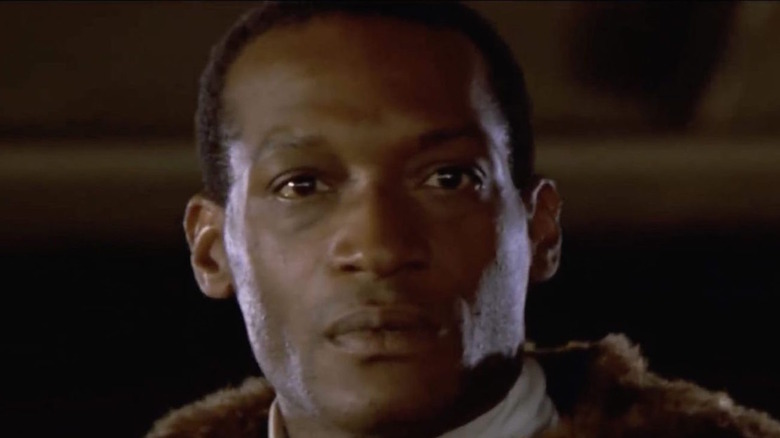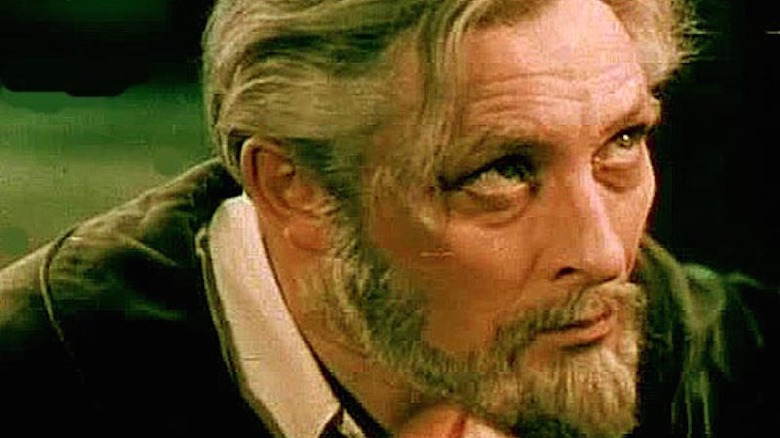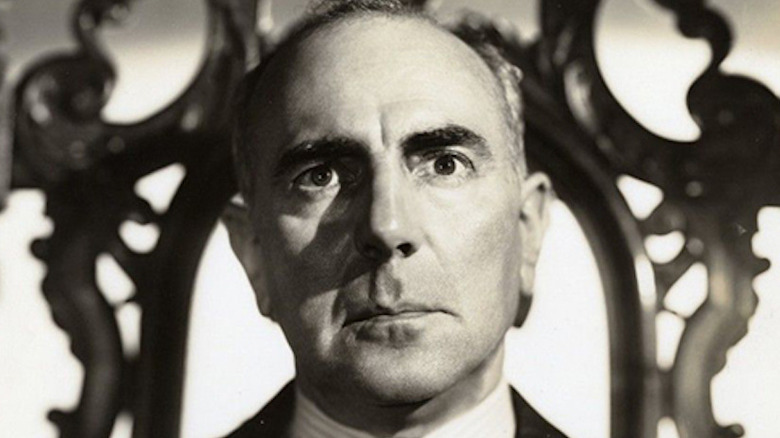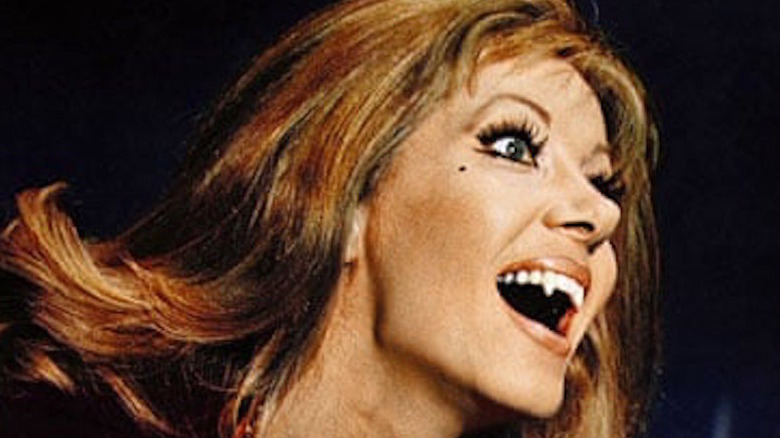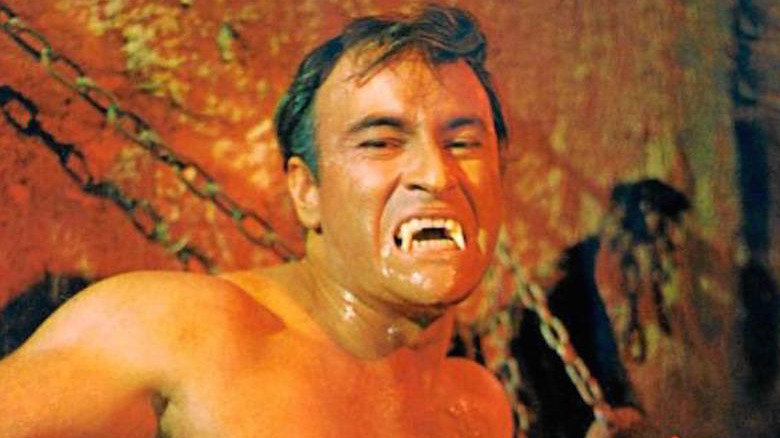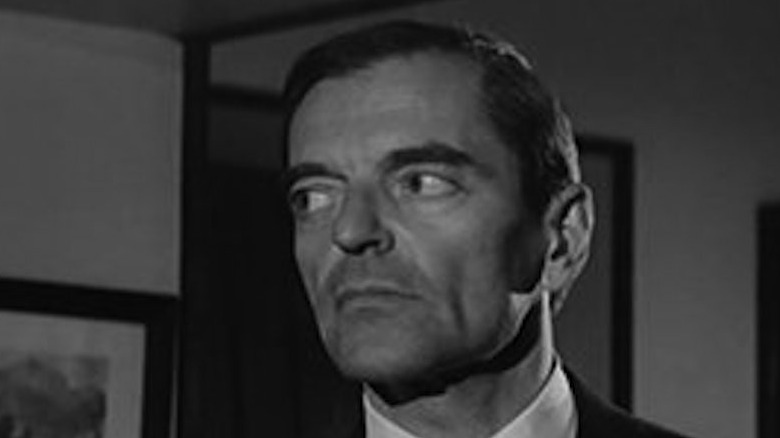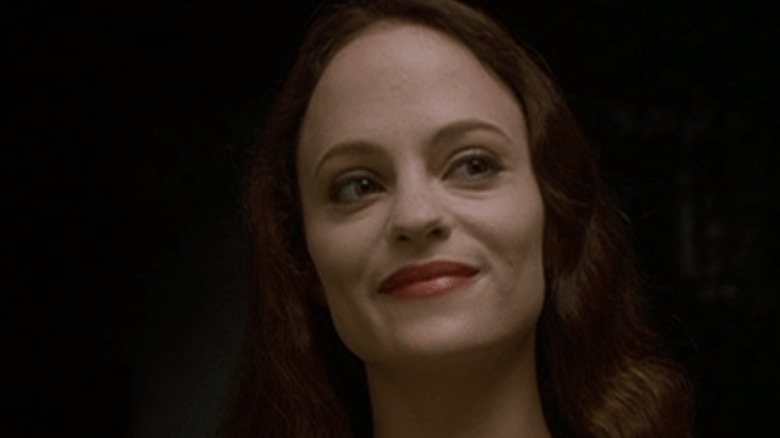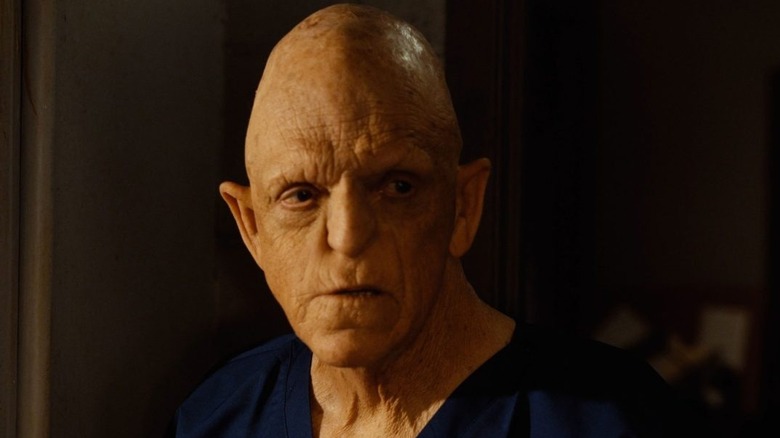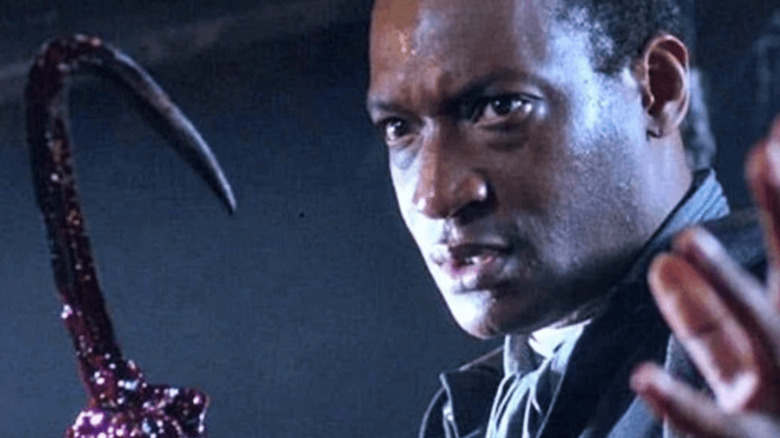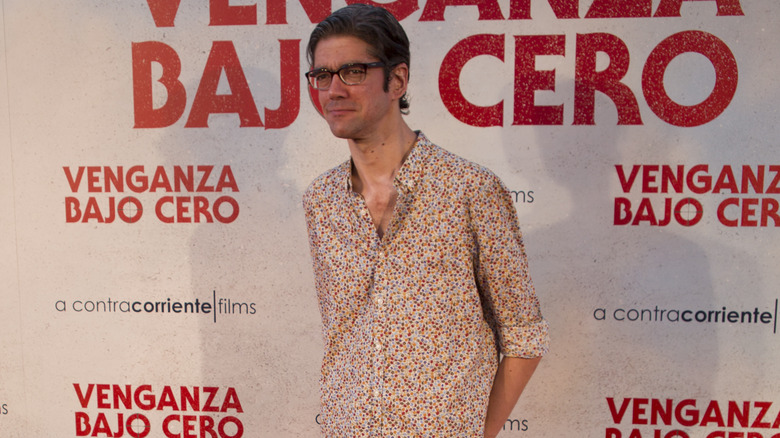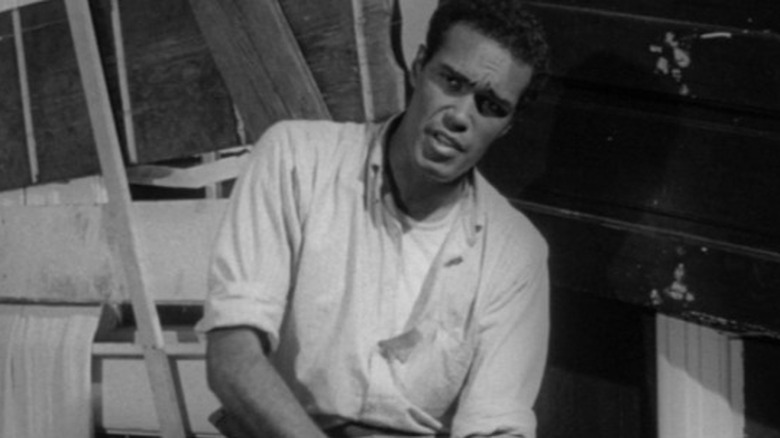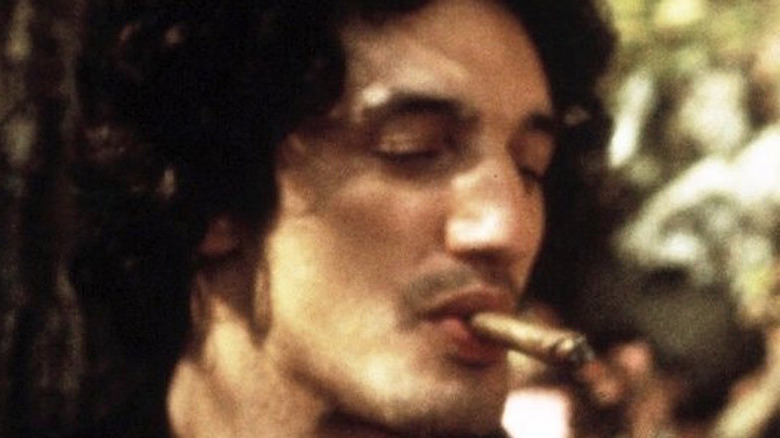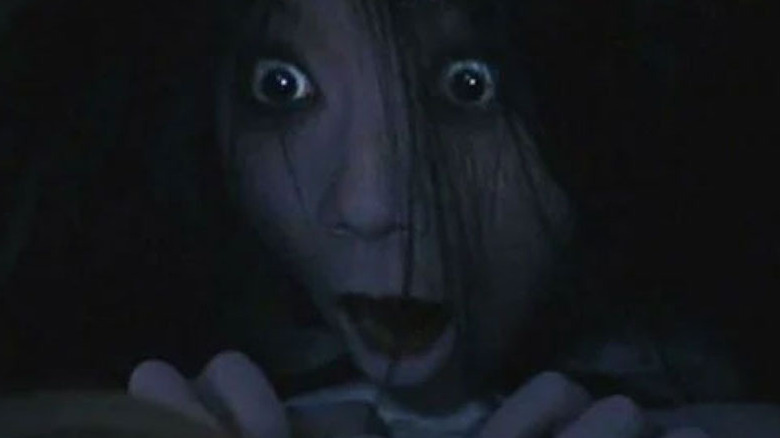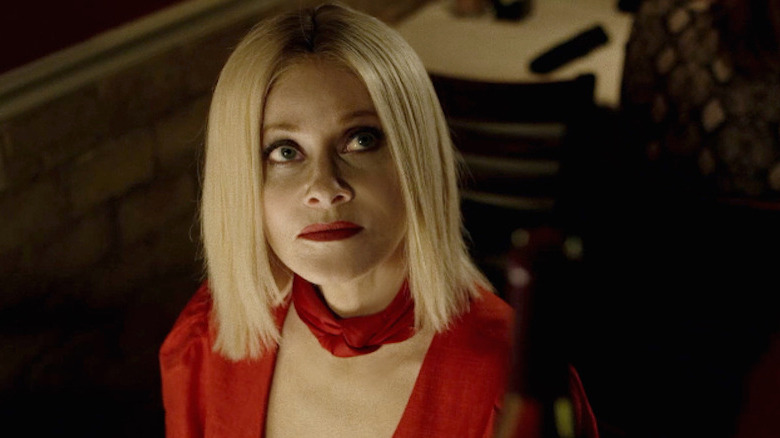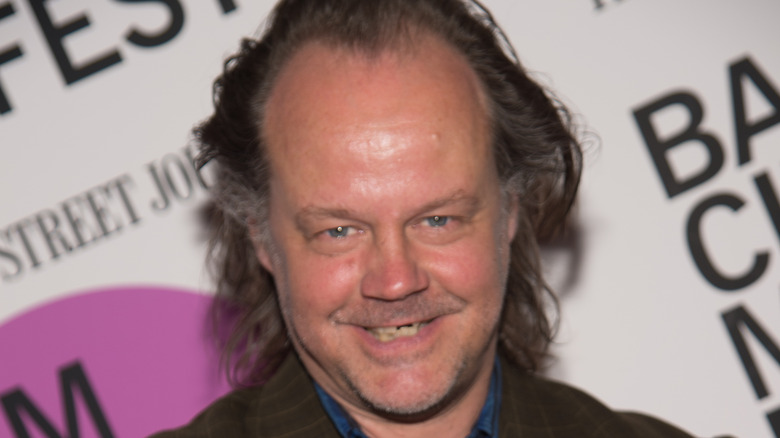Horror Icons You Should Know
Each movie genre has its iconic performers, and horror is no exception.
Every decade or so in the past hundred years of motion picture history has seen a group of actors whose names and careers became synonymous with the genre. First came Boris Karloff, Bela Lugosi, and Lon Chaney, Sr. and Jr. in the 1920s and 1930s; the '50s and '60s brought us Christopher Lee, Peter Cushing, and Vincent Price. The '80s had its share of scream greats, from Robert Englund ("A Nightmare on Elm Street") and Jeffrey Combs ("Re-Animator") to Bruce Campbell of "Evil Dead" fame, as well as a host of straight-to-video scream queens.
Modern horror icons seem to be more character-based than personality-driven — see Jigsaw, Pennywise, Red from "Us" — though cases could certainly be made for actors like Kane Hodder and even Patrick Wilson and Vera Farmiga of the "Conjuring" films as possible 21st century icons.
But not every icon is a household name. With that in mind (and spoilers ahead), here are some lesser-known horror icons you should know.
Lionel Atwill was elegantly evil
Few actors could bring an air of refinement and elegance to homicidal mania quite like Lionel Atwill.
A distinguished stage actor in his native England and America, Atwill found success in Hollywood in an array of roles, including an obsessed lover in Josef von Sternberg's award-winning "The Devil is a Woman" in 1935. However, Atwill's lasting screen legacy comes from his string of appearances in horror films of the 1930s and 1940s.
His most notable turns came as the disfigured artist who crafts wax figures from living victims in "Mystery of the Wax Museum" and as the police inspector whose arm was torn off by the Monster in "Son of Frankenstein," but Atwill appeared in numerous other fright films, including the grisly "Murders at the Zoo," as a lunatic who uses animals to commit murder. Horror became Atwill's primary showcase in the 1940s, especially after a scandal tainted his career; he lent class to low-budget features like "Man-Made Monster" and serials like 1944's "Captain America" before his death from lung cancer and pneumonia in 1946.
George Zucco kept a stiff upper lip in B-horror
An austere figure in American and English movies, British actor George Zucco is perhaps best remembered for a string of low-budget horror films in the 1940s.
After serving in World War I, Zucco was a stage actor before entering the motion picture business in 1931. His well-heeled image made him ideal for distinguished figures like statesmen, doctors, and politicians. But a pair of villainous turns in 1939's "The Adventures of Sherlock Holmes" (as Professor Moriarty) and "The Hunchback of Notre Dame" seemed to imprint him as a bad guy, and while he continued to land supporting roles in A-pictures like "A Woman's Face," Zucco was soon a staple of poverty-strapped monster movies of the period.
Zucco managed to retain some dignity in films like "The Mad Monster" (1942) and "Dead Men Walk" (1943), as well as three entries in Universal's Mummy franchise, but by the midpoint of the decade, he was reduced to starring opposite an equally diminished Bela Lugosi in the ludicrous "Voodoo Man" and "Return of the Ape Man" — a movie he's billed in, but can only be glimpsed for mere seconds. Zucco returned to straight dramas and adventures by the early 1950s, but a stroke on the set of "David and Bathesheba" (1951) left him in poor health until his death in 1960.
Ingrid Pitt brought glamour to Hammer FIlms
Though England's Hammer Films featured many memorable actresses in their horror and fantasy titles, few have enjoyed as much enduring popularity as Ingrid Pitt.
The Polish-born Pitt (who survived life in a concentration camp during the World War II) began acting in the late 1960s, and logged appearances in mainstream Hollywood features like "Doctor Zhivago." But she fared better in England, where she starred in two Gothic vampire films for Hammer: "The Vampire Lovers" and "Countess Dracula."
In both films, Pitt played the vampire (or in the case of "Countess," a vampiric figure), not the victim, and imbued both roles with every bit as much sinister and sensual presence as Christopher Lee in his multiple studio turns as Dracula. Unlike many of her fellow female Hammer stars, Pitt enjoyed a substantial later career in films and television — she had small roles in "The Wicker Man" (1973) and "Octopussy," and appeared on "Doctor Who" and Brian Clemens' "Thriller" TV series.
Pitt also compiled several books of supernatural stories and columns for magazines and web sites, and was an aviation enthusiast with a black belt in karate. Pitt remained active with her writing and fans until her death on November 23, 2010.
Paul Naschy, el rey de horror espanol
Former professional weightlifter Jacinto Molina parlayed a childhood interest in horror movies into his own lengthy and prolific career as an actor and filmmaker in his native Spain.
As Paul Naschy, he starred in, wrote, and later directed dozens of movies, the best known of which featured his antihero Waldemar Daninsky, a nobleman cursed with lycanthropy. Naschy played "El Hombre Lobo" in 12 furiously energetic, blood-soaked films between 1968 and 2004, and gave burly takes on Count Dracula, Dr. Jekyll, a revived mummy, and an array of madmen and malevolent types, both living and undead.
Despite failing health, he continued to appear in low-budget features, both in America and Europe until his death in 2009. However, his vast filmography — typically available to English-language audiences only in cut and poorly dubbed editions — has been the subject of numerous recent Blu-ray releases, which have re-introduced his unique contributions to international horror to audiences.
Howard Vernon: the doctor is in(sane)
Though he worked for such directors as Jean-Luc Godard, Fritz Lang, and Woody Allen, Swiss-born actor Howard Vernon is best remembered to grindhouse devotees for the more than 40 outrageous films he made with prolific exploitation auteur Jesus (Jess) Franco.
With his gaunt, regal bearing and heavy-lidded eyes, Vernon was Franco's go-to choice for mad scientists and other obsessives like Dr. Orloff — a lunatic surgeon determined to restore his wife's disfigurement with the flesh of unsuspecting victims.
Vernon played Dr. Orloff in several of Franco's films, beginning with 1961's "The Awful Dr. Orloff," and went on to also play Dracula and other deranged authority figures for the director in the ensuing two decades. No matter how ridiculous or nonsensical the plot, Vernon's presence lent a touch of class and a dash of entertaining scenery-chewing to films by Franco or other European exploitation filmmakers like Umberto Lenzi or Jean Rollin. He capped his long career with arthouse projects like the Jean-Pierre Jeunet/Marc Caro classic "Delicatessen" before his death in 1996.
Angela Bettis: fearless, frightening horror femme
An unnerving, fearless presence in indie and mainstream horror for nearly two decades, Angela Bettis has tackled challenging and taboo subjects and characters as both an actress and filmmaker.
Supporting roles in Hollywood features like "Bless the Child" and on Broadway led to her breakout role in Lucky McKee's "May," which established her horror screen persona: a woman whose outward fragility masks a powerful and often frightening inner life. Bettis has parlayed that intense mix in several other shocking films, including the 2002 TV remake of "Carrie," McKee's "The Woman" and the jarring 2021 release "12 Hour Shift," for which she plays an emergency room nurse who turns to murder and organ harvesting to feed a drug addiction.
Bettis also displayed a keen eye for the unsettling as a director with "Roman" — starring McKee and Kristen Bell — and a segment of the anthology film "The ABCs of Death."
Michael Berryman: From cannibal to convention favorite
Though his distinctive look — the result of a rare condition called hypohidrotic ectodermal dysplasia, which causes the abnormal development of sweat glands, hair, skin, and teeth — helped provide him with an acting career, it's Michael Berryman's natural talent and outsized personality that has kept him on screen for more than four decades.
Berryman first came to audiences' attention with a bit role in "One Flew Over the Cuckoo's Nest," but it was his turn as the feral Pluto in Wes Craven's "The Hills Have Eyes" that made him a favorite of horror fans. Though he's remained a staple of the genre since then, most notably in Rob Zombie's "The Devil's Rejects" and "Lords of Salem," Berryman has also appeared in episodes of "The X-Files" and "Star Trek: The Next Generation" (as well as "Star Trek IV" and "V") and showed his comic chops in "Weird Science," on "ALF," and in music videos for Motley Crue, the Ramones, and Eminem. He remains a go-to talent for up-and-coming horror filmmakers, as well as a beloved guest at conventions across the country.
Tony Todd is a horror icon times two
It's not every actor who can claim not one but two iconic characters in a single career, but then again, not every actor is Tony Todd.
The basso-voiced, theater-trained Todd is remembered by horror devotees as the tragic Candyman in four eponymous films — including the upcoming, Jordan Peele-penned sequel, for which he'll reprise his terrifying role — and as the sinister William Bludworth in the first, second, and fifth titles in the "Final Destination" franchise.
He also played the tragic hero Ben in Tom Savini's underrated remake of "Night of the Living Dead," and made impressions in countless indie horror films including "Hatchet" and its sequel, the harrowing "Murder Set-Pieces," "Minotaur," "Tales from the Hood 3" and more. Todd is also a staple of episodic TV, with multiple appearances on various "Star Trek" series, "Masters of Horror," and the "Scream" series to his name, as well as voice-over performances for many animated features and series.
Javiet Botet is the man behind the movie monsters
Spanish actor Javiet Botet has embodied some of the most striking movie monsters of the last decade, including The Crooked Man in "The Conjuring 2," the Hobo, Witch, and Leper in "It," and the title roles in "Slender Man" and "Mama."
Diagnosed with Marfan syndrome — a genetic condition that can cause disproportionate height and limbs — the 6'7" Botet found an outlet for his artistic aspirations in horror and fantasy films and television. His breakout role came as the monstrous carrier of a demonic virus in the Spanish horror "[REC]" and its two sequels.
Work with Guillermo Del Toro on "Crimson Peak" soon followed, as did roles in American horror films like "Scary Stories to Tell in the Dark" (which cast him as the Toeless Corpse) and the infamous Tom Cruise franchise-staller "The Mummy." Since then, Botet has moved even closer to the mainstream with turns as a Wight on "Game of Thrones" and as a Ba'ul on "Star Trek: Discovery."
Duane Jones, hero to zombie killers everywhere
Actor Duane Jones may have the fewest film credits of any performer on this list — but that doesn't make him any less an icon.
A scholar, Peace Corps instructor, and respected educator, Jones's acting career was focused largely on the theater, where he also served as a director. Yet he remains an indelible figure in the history of horror films for his performance as Ben, the no-nonsense but empathetic hero of George A. Romero's groundbreaking zombie classic "Night of the Living Dead."
The notion of a Black hero in a horror film in 1968 was a revolutionary one, and by Romero's account, an unintentional one. According to the filmmaker, Ben was written without any reference to race, and Jones just happened to be the best actor he and his producing partners saw for the role.
Jones rewarded that assessment with his performance: Ben is sympathetic and human, but also unflappable and tough when necessary. Showing no fear in the face of the zombie horde or the power-brokering of fellow survivor Harry, Jones gave a complex performance that still elicits a tremendous shock when the character meets his fate in the film's climax.
Jones went on to appear in several other films, including Bill Gunn's remarkable vampire drama "Ganja & Hess," but his work in "Night" remains a landmark turn in a landmark film.
David Hess, the music man turned movie maniac
A former record executive and songwriter for Elvis Presley, among others, David Hess found greater notoriety as the father figure for a crew of merciless killers in Wes Craven's still-shocking "The Last House on the Left."
Hess's harrowing performance defined his screen acting career, which included equally diabolical characters in Ruggero Deodato's "House on the Edge of the Park" and Pasquale Festa Campanile's "Hitch-Hike," as well as less unhinged bad guy roles in Craven's "Swamp Thing," among others.
Off-screen, Hess wrote English-language shooting scripts for European directors like Rainer Werner Fassbinder, taught acting at the California Film Institute, and never strayed too far from his music career (which included the melancholy psych-folk songs featured in "Last House" and later on the soundtrack for "Cabin Fever, as well as several album releases).
But it is his teetering-on-the-edge antagonists, so close to palpable danger and madness, for which he'll be remembered with a mix of fondness and fear by devotees of hardcore horror.
Takako Fuji: The woman behind the white face in The Grudge
A background in dance and a talent for contortion made actress Takako Fuji the ideal choice to play Kayako Saeki, the vengeful and tragic spirit of a murdered woman in the Japanese horror film "Ju-On" and its American blockbuster remake, "The Grudge."
Fuji made her debut as Kayako in "Katasumi," a 1998 short by Takashi Shimizu that introduced the character, and reprised the role in a feature-length direct-to-video release, "Ju-On: The Curse," which provided the tragic circumstances of her death and an explanation for her signature death rattle (a slit throat in the "Ju-On" films, a broken neck in the "Grudge" features) and puppet-like movements.
Fuji went to reprise Kayako in both the Japanese and American theatrical versions of "Ju-On" and their respective first sequels, but demurred for an eighth turn in the role for the 2014 Japanese reboot, "Ju-On: The Beginning of the End" or the third American sequel (and 2019 reboot). Fuji, who is also a prolific voice-over artist, did provide the Japanese language dub for Lin Shaye's character in the 2019 film when it was released in that country.
Barbara Crampton, a horror heroine with guts
If actress Barbara Crampton's career in horror films had ended with Stuart Gordon's "Re-Animator," she would have remained a cult favorite thanks to her no-holds-barred commitment to the grisly goings-on in that film.
But Crampton has maintained not only a presence in horror since then, but also cultivated a reputation for tackling offbeat and challenging roles in numerous features. She played a scientist driven mad by interdimensional beings in Gordon's "From Beyond," a grieving mother plagued by evil spirits in Ted Geoghegan's "We Are Still Here," a cultist in the Lovecraftian horror "Sacrifice," and in Travis Stevens' "Jakob's Wife," Crampton was top-billed as a meek housewife who finds a sort of freedom after turning into a bloodthirsty vampire.
Crampton's willingness to invest these unusual films and conflicted characters with energy and real emotion has made her a compelling character actor and a bona fide horror heroine.
Larry Fessenden, a one-man horror industry
Since 1985, indie multihyphenate Larry Fessenden has produced, written, directed and starred in a string of uncompromising horror films straddling the border between arthouse and grindhouse fare.
Fessenden's features ground classic horror tropes in real-world scenarios: obsession conflates with vampirism in the Indie Spirit-winning "Habit"; guilt and family conflict seem to bring a supernatural figure to life in "Wendigo"; PTSD motivates an Army vet to create a humanoid monster in "Depraved."
In addition to his own films, Fessenden has produced indie horror for other notable directors, including Jim Mickle ("Stake Land"), Ti West ("The House of the Devil") and James Felix McKinney ("Satan Hates You"), and acted in numerous indie horror features ("You're Next," "Jakob's Wife," Jim Jarmusch's "The Dead Don't Die") as well as mainstream dramas like Martin Scorsese's "Bringing Out the Dead" and Neil Jordan's "The Brave One."
As if that's not enough, Fessenden also wrote the interactive horror games "Until Dawn," "The Inpatient," and "The Dark Pictures Anthology: Man of Medan." A one-man horror industry unto himself, Fessenden consistently redefines the creative boundaries of indie fear films.
